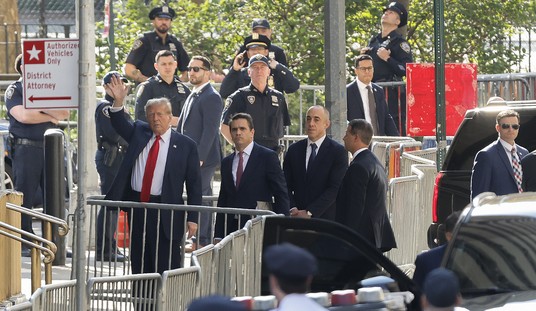There is a certain childlike delight in pointing a finger at your political opponents and taunting them with the sandbox epithet, “Told ya so, told ya so!”
Immature? Sure. But after all the taunting done by President Obama since he came into office, I think we can cut ourselves some slack this one time in order to lord it over an administration that badly miscalculated when attempting to scare the American people into putting pressure on the GOP to give up on the sequester.
News of the dire impact of the sequester on government services isn’t materializing. It’s true that the government funding bill passed last week allowed department heads and agency managers to move some funds around to lessen the impact of the sequester. But, in truth, even with the freedom of action granted by Congress, the scaremongering done by the administration that foretold drastic consequences if the sequester came to pass would have been discovered to be false anyway.
In short, the rhetoric isn’t matching the reality.
More than a month after Transportation Secretary Ray LaHood warned of “calamity” in the skies, travelers are still flying. Airlines aren’t yet canceling flights. And there’s no sign of the long lines the Obama administration warned everyone to expect when automatic spending cuts hit March 1.
What happened? The much-feared budget ax is turning out to be a slow-rolling series of snips, with effects that have been much more gradual or modest than projected.
Airlines have yet to suspend or cancel flights in response to the cuts, even though LaHood predicted during a White House appearance Feb. 22 that they would do so “within the next 30 days.”
Meanwhile, far fewer airport control towers are facing potential closures than the 238 that the Federal Aviation Administration warned about in February. Only 24 towers — in places like Olathe, Kan., and Gig Harbor, Wash. — are in the first batch set to lose all their FAA funding on April 7. Dozens more will follow through early May, but local or state funding will keep some of those towers operating indefinitely.
The alarms about air travel are a prime example of how the White House “badly miscalculated” its rollout of the sequester, House Aviation Subcommittee Chairman Frank LoBiondo (R-N.J.) said.
He reserved particular ire for suggestions that the administration instructed agencies not to prepare until almost the bitter end, then pulled out a megaphone to broadcast impending doom.
“In the case of the FAA, it was the same thing — don’t prepare, don’t prepare, don’t prepare, and then a week or two weeks out, full campaign mode,” LoBiondo said. “People can come to their own conclusion, but I’m not sure [President Barack Obama] wants a solution on this, the way he’s been handling it.”
House Transportation Chairman Bill Shuster (R-Pa.) issued his own verdict within two weeks of the sequester taking effect March 1: “The sky isn’t falling.”
Nobody gave the Air Traffic Controllers union the memo:
“There are very real and very negative impacts to sequestration,” said Doug Church, a spokesman for the National Air Traffic Controllers Association, pointing to data the union has compiled looking at impacts to major airports. “There will be a degradation of capacity and efficiency at a time when we should be focused on increasing both.”
No doubt the union will do its best to make LaHood’s predictions come true. But for the moment, airport operations are making LaHood out to be a liar — and a bad one at that.
Eventually, there will be visible consequences to the sequester cuts. They are not targeted carefully and some programs and operations were cut too much (others, probably not enough). But the GOP has gained the high ground in this debate and has dealt a blow to the credibility of the Obama administration.









Join the conversation as a VIP Member